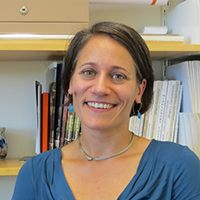
Topic: Testing for lead in Addison Central School District drinking water
Abstract:
Lead (Pb) is a neurotoxin with well-established effects on human health and development, including increased risk of learning disabilities and aggressive behavior, decreased IQ. Children’s exposure to Pb is particularly concerning, because children absorb a higher fraction of ingested lead into their bodies than adults do, and because the effects of Pb exposure during critical periods of development can be irreversible. The US EPA estimates that ~20% of Pb exposure is through drinking water. Because children spend considerable time at school and because schools are not generally required to test their water for Pb, we took as our goal to test drinking water in Addison Central School District (ACSD) schools for Pb. We tested all water outlets, including drinking fountains, bottle fillers, sinks, ice machines, and showers. In the four schools completed to-date, we found an average of four outlets (range 0-12) exceeded the EPA Pb action level of 15 ppb. On average, 17% of outlets (range 7-34%) exceeded the US Food & Drug Administration’s allowed Pb level for bottled water (5 ppb), while an average of 45% of outlets (range 21-79%) delivered water that exceeded the American Academy of Pediatrics safety level for school drinking fountains (1 ppb). In this talk, I will present additional results, factors that influence our prioritization for remedial efforts, as well as the ongoing collaboration with ACSD to address the findings.

Example school floorplan showing locations of all water outlets tested at Mary Hogan Elementary School.
Biography:
Molly Costanza-Robinson is an Associate Professor in the Department of Chemistry and Biochemistry and the Program for Environmental Studies. She came to Middlebury in 2005 after postdoctoral research and teaching in the Department of Chemistry and Biochemistry at Northern Arizona University. She received her Ph.D. in the Department of Soil, Water and Environmental Science with a minor in Analytical Chemistry at The University of Arizona in 2001, and a B.S. in Chemistry and German Literature from the University of Wisconsin-Madison in 1996. At Middlebury, Molly regularly teaches environmental chemistry, natural science and the environment, analytical chemistry laboratory, and the environmental studies senior seminar. She has also taught CSI: Middlebury and caveman chemistry as winter-term and first-year seminar courses.
Molly’s environmental chemistry lab group focuses on understanding the physicochemical processes that influence the fate and transport of anthropogenic contamination in subsurface and engineered environments. Past projects include the application of synchrotron X-ray microtomography-based methods to investigate soil properties relevant to contaminant fate and transport; the chemical characteristics of biodiesl derived from algae grown on anaerobically digested dairy manure; as well on the transfer and biotransformation of arsenic in freshwater food webs.
Currently, the lab is investigating the chemistry governing the uptake of organic contaminants into the interlayer of activated clay minerals. These investigations will allow the group to develop novel activated clays that optimized for removal of contaminants from wastewater. Our lab is also engaged in an interdisciplinary environmental health collaboration in which we are developing novel bioindicators that signal endocrine disruption development in a given population.
